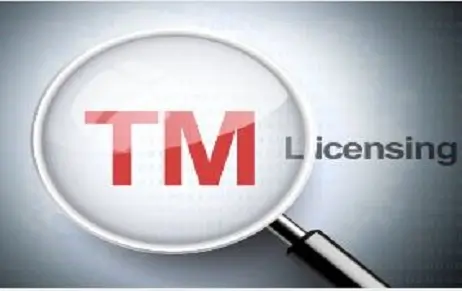Introduction An intellectual property right is an intangible right. It is uncontested that the “brand”…
Impact Of Medimmune Case
Introduction
The MedImmune case[1] arose when MedImmune, a pharmaceutical manufacturing company, challenged the validity of Cabilly patent II granted to Genentech, a biotechnology corporation. MedImmune had signed an agreement with Genentech, which was the patent holder, to license the Cabilly I patent and the then-pending Cabilly II patent application, entitling MedImmune to make, use, and sell the subject matters of the Cabilly I patent and the Cabilly II application in manufacturing the drug Synagis. In lieu of such license granted to MedImmune by Genentech, MedImmune paid royalties to Genentech.
After Genentech was granted the patent over subject matter of Cabilly II in 2001, they demanded MedImmune to pay further royalties for the same from March, 2002. Genentech had the intention of terminating their original contract with MedImmune and suing them for patent infringement if they refused to pay revised royalties to Genentech. Although MedImmune did not believe that the patent granted to Genentech was valid, it did not breach their contract and continued paying royalties as demanded by Genentech, but paid them under protest.
Even while paying the royalties under protest, MedImmune filed an action for declaratory relief in the District Court, which was dismissed for lack of subject-matter. Upon appeal, the Federal Circuit affirmed the decision of District Court.
Historical background
The validity of a patent can be challenged by a third party way of a petition under article 311 of the US Patent Act.[2] A patent can be challenged for lack of novelty or for obviousness, among other grounds mentioned in articles 102 and 103 of the same act.[3] In eBay v. MercExchange L.L.C.[4], the Supreme Court ruled that a patent must meet all the requirements of patentability, non-obviousness, novelty and usefulness under the four factor test for the patent holder to obtain a permanent injunction.
The MedImmune case overruled many precedents decided by the US Supreme court. In its 1969 decision in Lear v. Adkins[5], the SC had rejected the doctrine of license estoppel, allowing the licensee to challenge the validity of the patent while stopping the payment of royalties. The court observed that such clauses (including “no contest” clauses) protect bad patents and therefore go against public policy. But this doctrine was later upheld by the Federal Circuit in multiple cases like Flex-Foot Inc. v. CRP Inc[6] and Acoustical Design, Inc. v. Control Elec. Co.[7] and continuously put restrictions on the decision in Lear case.
In the case of Altvater v. Freeman[8], the Supreme Court held that a declaratory judgment suit filed by a licensee for declaring a patent invalid should not be rendered non-justiciable simply because of his failure to stop payments of royalty. The facts of this case were similar to those of MedImmune case. The Supreme Court relied heavily on this case while deciding the MedImmune case.
Decision
The main issue before the court in the present case was whether the actual-controversy requirement (requirement of a real dispute capable of being decided by the court) to pass a declaratory judgment deciding upon the rights, duties and obligations requires the licensee to first breach the license agreement by refusing payment of royalties before suing the patent holder to declare the patent invalid, unenforceable, or not infringed.[9]
The Court held that declaratory judgment jurisdiction existed regardless of MedImmune’s actions of payment of royalties and refusal to breach the license agreement and licensee is not required to breach the agreement to file a declaratory judgment action. This judgment was passed with a majority of 8:1, with Justice Thomas being the lone one to dissent.
Effective strategies of patent holders i.e. Licensor
The patent holder may make effective use of the decision of MedImmune case by including the following strategies as clauses in a licensing agreement, in order to strongly protect their own rights:
- The licensor may include a clause of termination of the license if the licensee contests that validity of the patent in a court of law.
- Since the licensee can now challenge the validity of the patent without breaching the license agreement, the risk to the patent increases, so the licensor may demand higher royalties from the beginning to cover the risks and may also demand non-refundable payments.
- The licensor may also seek reimbursement of amount they spent on litigation, if the court upholds the validity of the patent.
- The licensee may be required to provide a notification of the suit to the patent holder and evidences against the patent before actually filing it. The licensors could also require settlement of dispute by way of arbitration rather than declaratory proceedings.
Effective strategies of Licensee
The licensee may adopt the following practices so as to not allow himself to be suppressed by the Licensor:
- The licensee may seek the right to not pay royalties during pendency of any suit challenging the validity of patent.
- He may further demand to be informed of any ground which may invalidate the patents, and may retain the right to challenge the licensed patent if they find any new evidence.
- The licensee may demand a right to temporarily discontinue royalty payments if the patent is challenged, by the licensee himself or by any third party, and the payment shall continue only if the patent is held valid.
Author: Ms. Nayanikaa Shukla, Intern at Khurana & Khurana, Advocates and IP Attorneys. In case of any queries please contact/write back to us at pratistha@iiprd.com.
References:
[1] MedImmune Inc. v. Genentech Inc. 549 U.S. 118 (2007).
[3] Ibid.
[4] 126 S. Ct. 1837 (2006)
[5] Lear Inc. v. Adkins, 395 U.S. 653 (1969)
[6] 238 F.3d 1362
[7] 932 F.2d 939, 943 (Fed. Cir. 1991)
[8] 319 U.S. 359 (1943)

